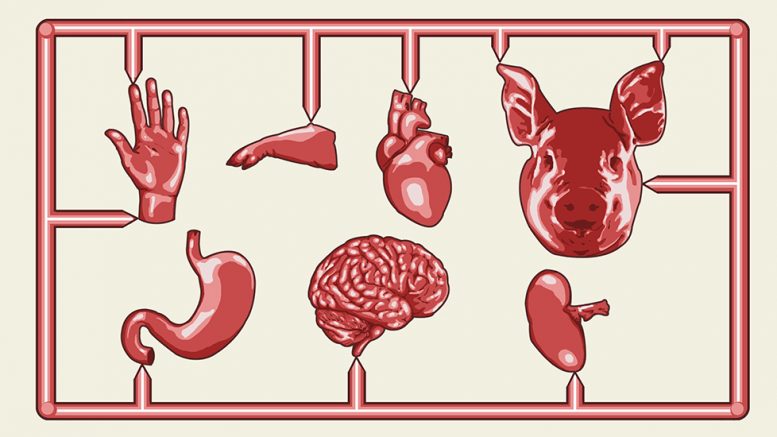For most of us, the word “chimera” evokes grotesque imagery: in Greek mythology, the chimera was a fire-breathing hybrid of lion, goat, and snake. A recent study attracted worldwide attention when researchers reported the first construction of a human-animal chimera last month. In this context, a chimera refers to a non-human animal embryo that contains human cells. In this particular situation, the non-human embryo was a pig’s. This interspecies study marked a step forward in a field that promises new sources to grow human organs for transplants.
In this study led by Juan Carlos Ezpisua Belmonte at the Salk Institute and published by the journal Cell, chimeras were generated by injecting human stem cells into developing pig embryos at very early stages. These human stem cells are unique in their ability to make any tissue from all over the body — in this case they focused on making heart, eye, and pancreatic cells. Pigs were chosen as a suitable host animal because they are relatively similar to humans in organ size and biology. As instructed by ethical guidelines, these chimeric embryos were not allowed to develop past the fetal stage during experimentation. However, in a separate study published in Nature, a team of researchers from universities in Japan, the U.K., and the U.S. recently demonstrated functional application when mouse pancreatic cells were grown and harvested in rats and transplanted back into mice. Clinical applications are many years away but in the short-term, chimeras may provide a way to study human organs in a more accurate, living system — something that is very difficult to do in the lab today.
The need for organ donation is increasing, as hundreds die every year while on the list of more than 4,500 people waiting for organs in Canada alone. The growth of healthy human tissues in non-human animals provides a potential clinical alternative to donor organs, but it raises its own host of bioethical concerns.
Due to these bioethical implications, this study was strictly funded by private sources, as public funding for chimera experiments is prohibited in the U.S. and Canada. Indeed, there is a ubiquitous “yuck” response to chimerism, which seems informed by moral intuitions. However, a general sense of ethical revulsion has not served well as a moral compass in the past for cases like blood transfusion and organ transplantation, as well as many other social issues.
Instead, some have argued for our duty to protect human dignity. This does seem to be a necessarily human issue, as interspecies plant and animal breeding are much less controversial. What constitutes a uniquely human quality? Is human dignity based on appearances and intuition or psychological qualities like consciousness and the capacity for moral decision-making – emergent properties of a nervous system? These questions dictate whether this study, which combined less than one human cell in 100,000 pig cells, warrants the public horror that it has garnered.


